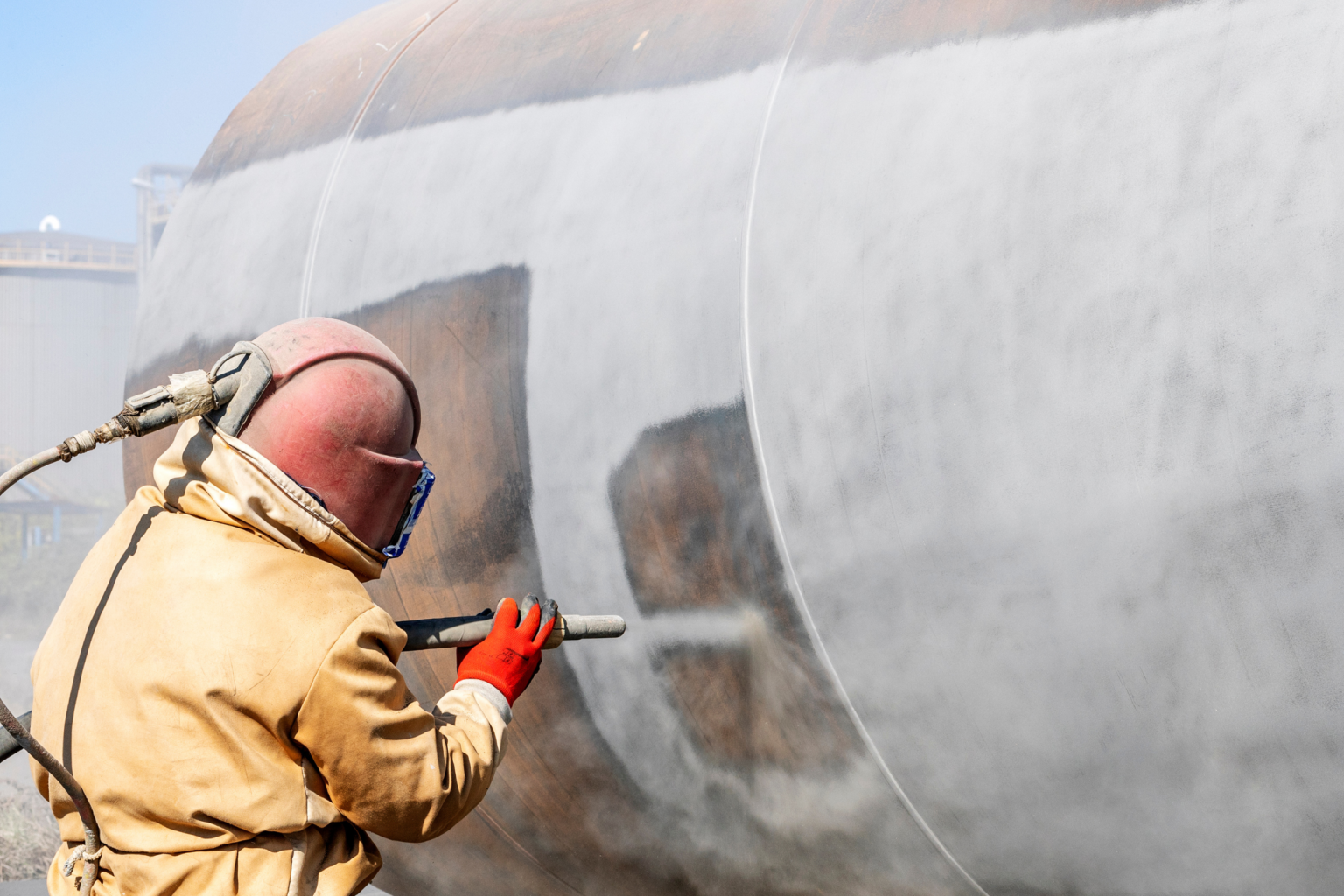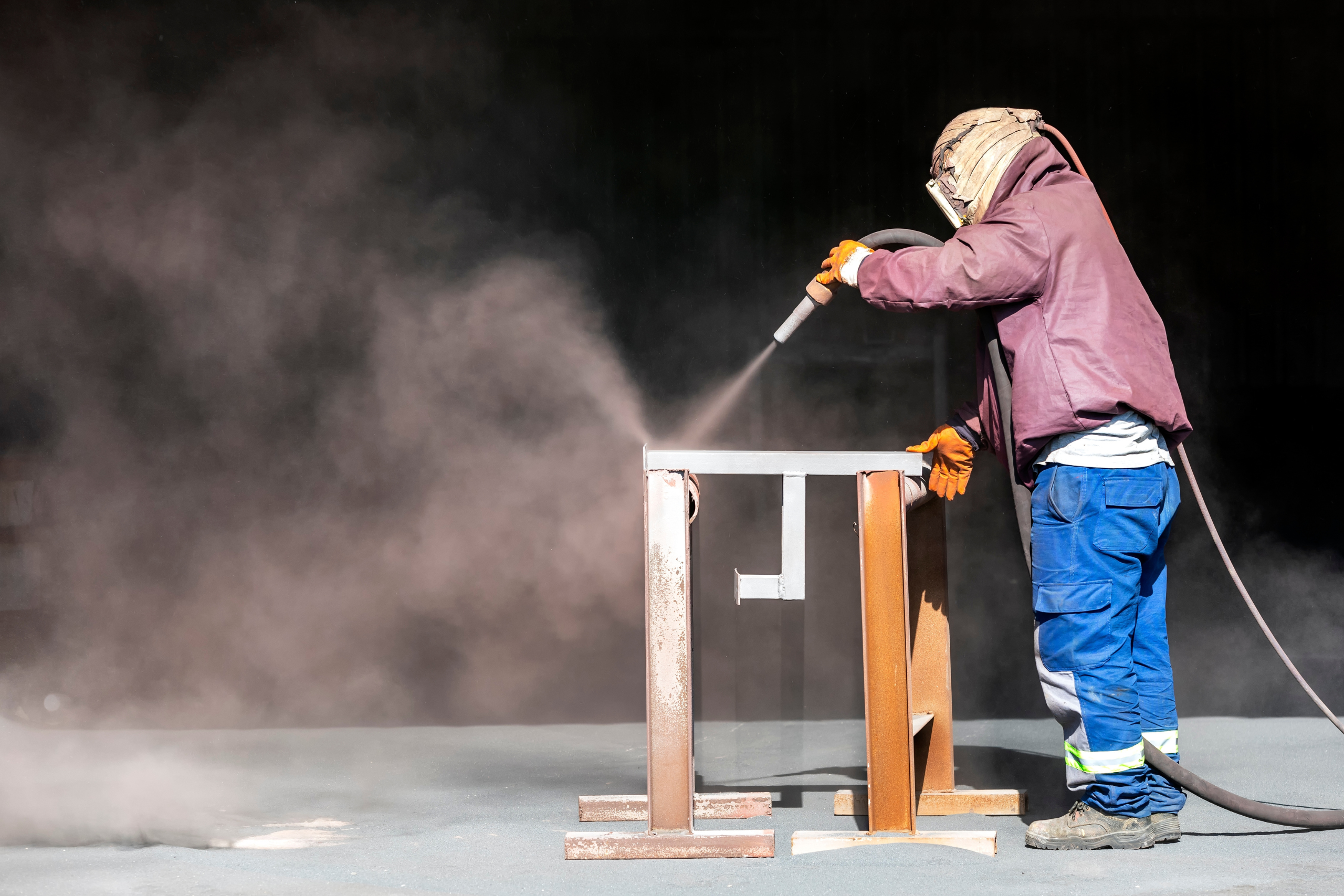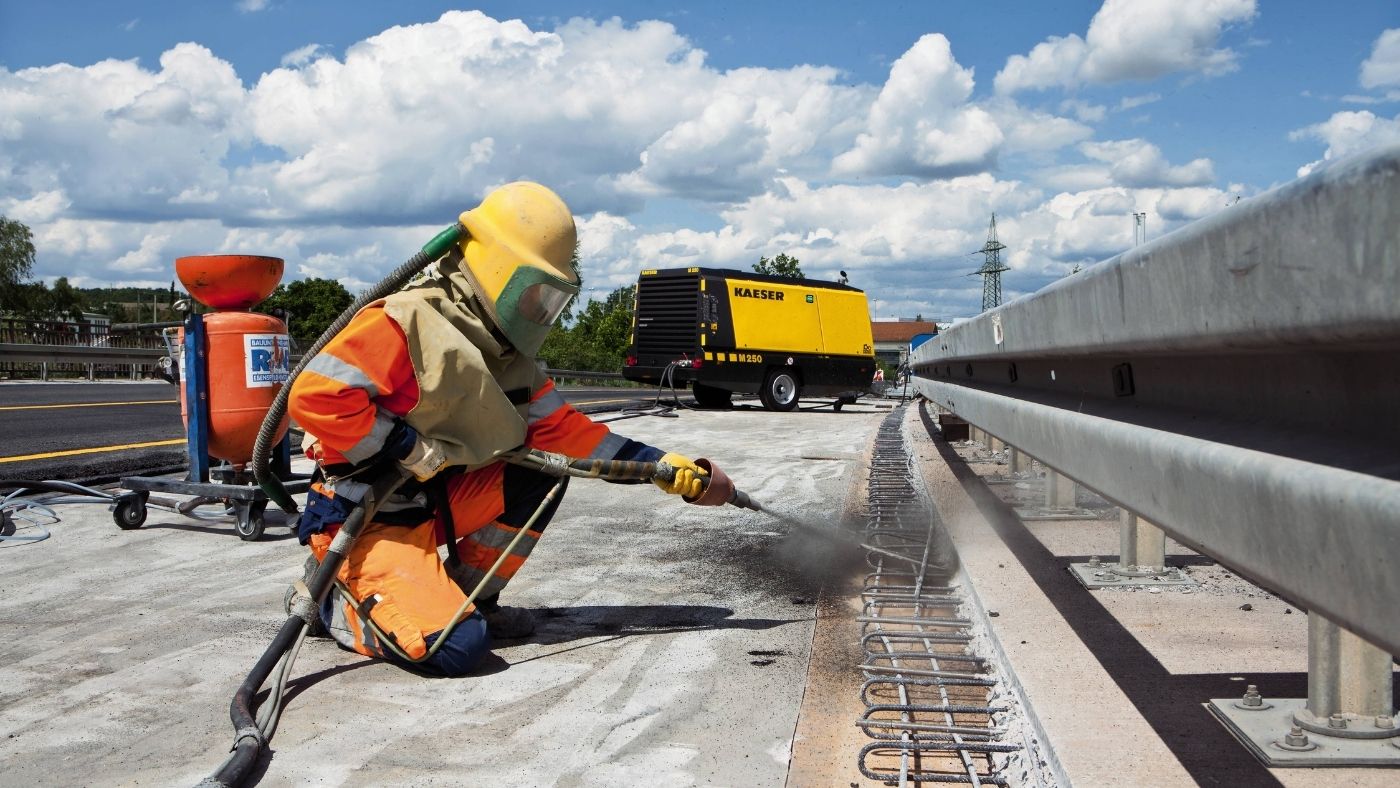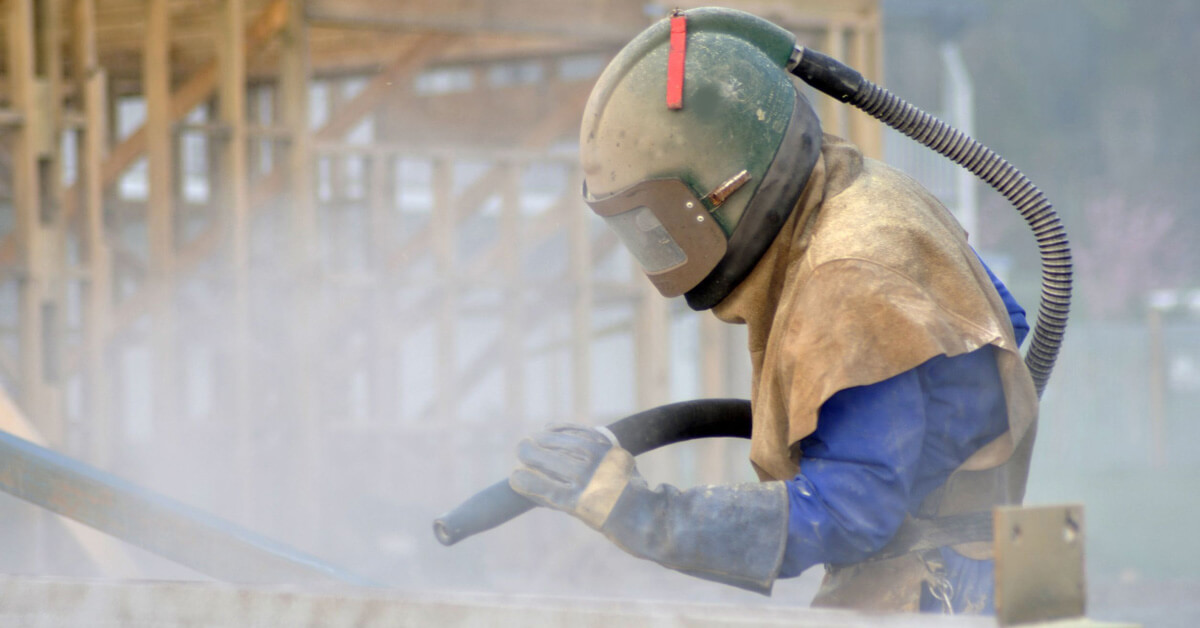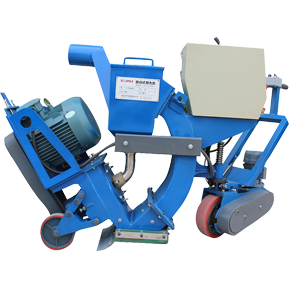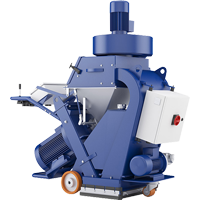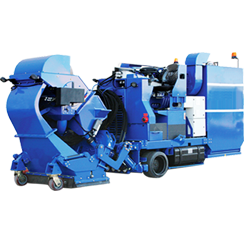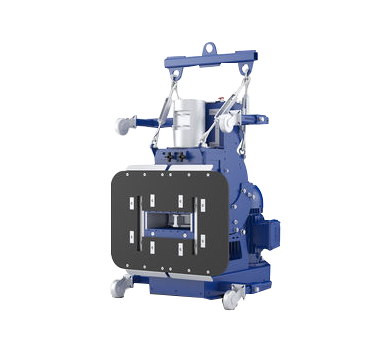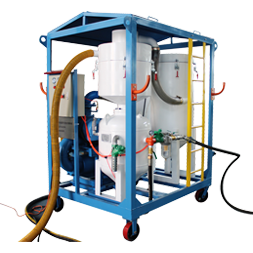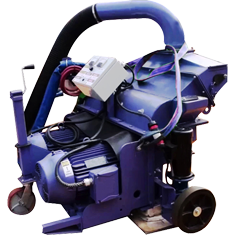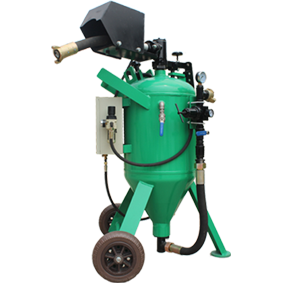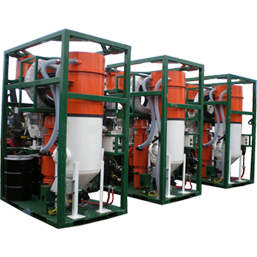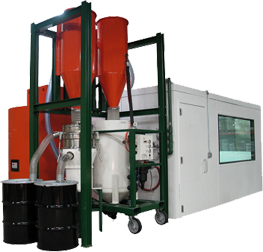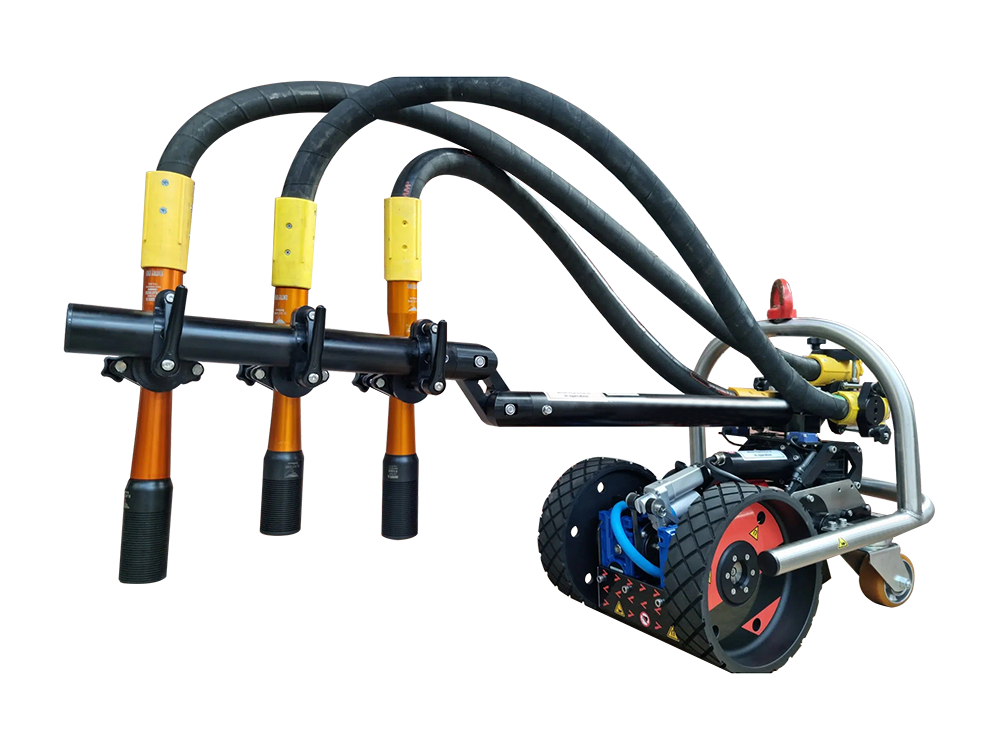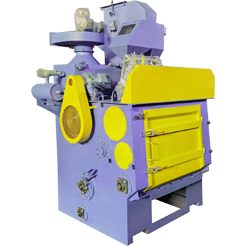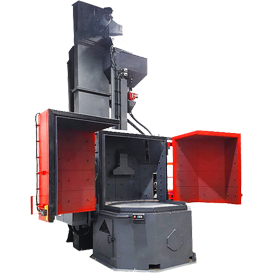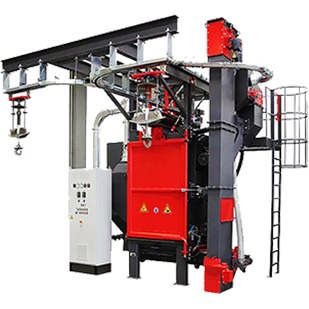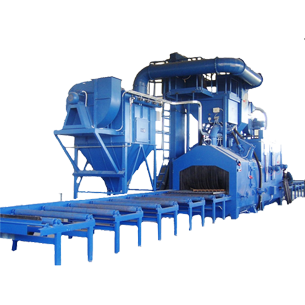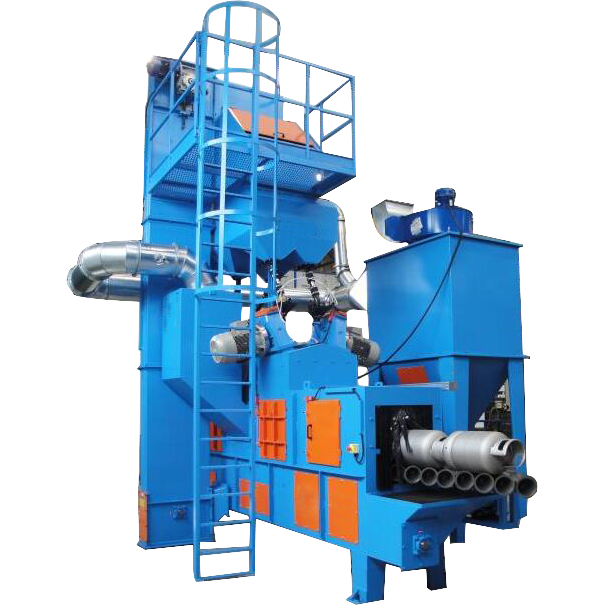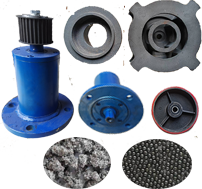BLOG
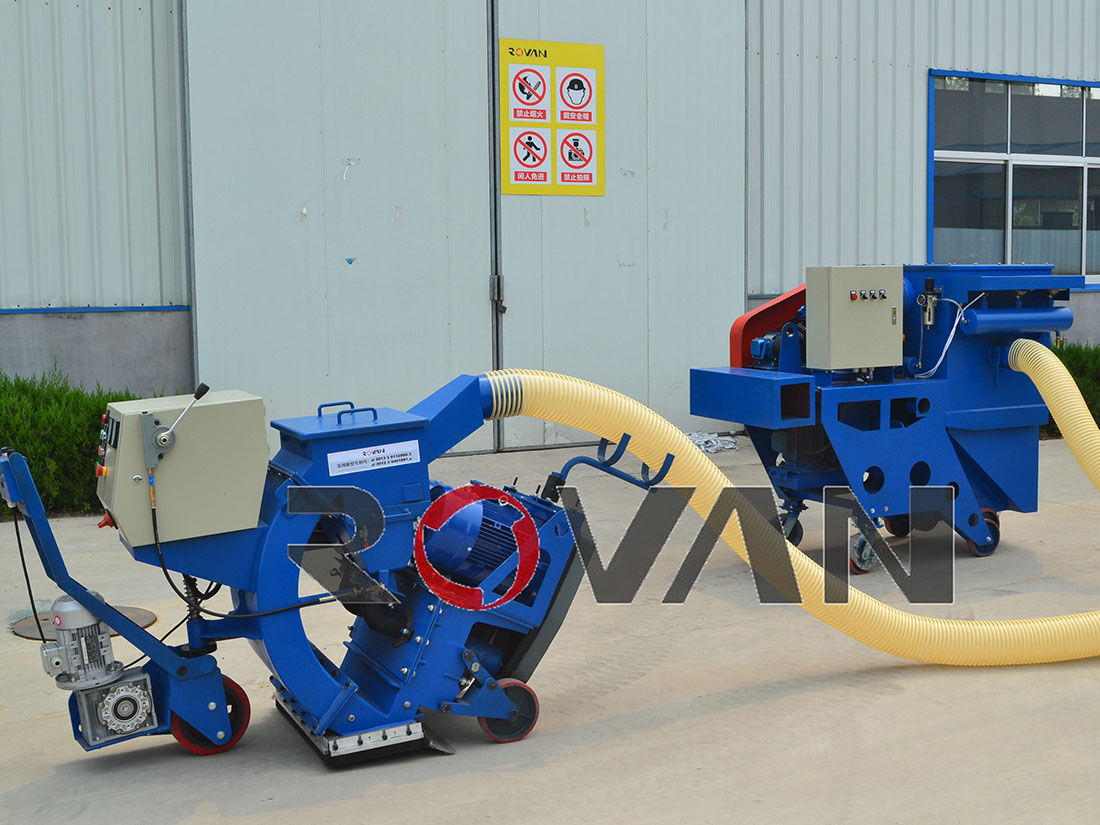
Shot blasting is pivotal in surface preparation across various industries, aiming to clean, strengthen, and polish metal surfaces. By blasting abrasive materials against surfaces under high pressure, it removes impurities, rust, and scale, ensuring a pristine substrate.
Essential in automotive, aerospace, construction, and shipbuilding, shot blasting technology guarantees the effective adhesion of coatings and paints, enhancing durability and corrosion resistance. As a critical preprocessing step, shot blasting optimizes surfaces for further treatments, playing a key role in maintaining the quality and performance standards in competitive industrial environments. Then how do shot blasting machines work? In this blog, we’ll elucidate almost every essential thing you want to know about shot blasting machines.
Understanding shot blasting machines
A shot blasting machine is equipment engineered to cleanse, fortify, or refine metal and other surfaces through a high-speed blast of abrasive material directed against them. Widely employed across industries, this technology serves surface preparation and finishing purposes with versatility.
Basic principle and purpose of shot blasting
The core principle of shot blasting revolves around the use of mechanical force to propel abrasive particles against a surface at high speeds. This action effectively removes surface contaminants, such as rust, scale, or old paint, and can also be used to impart a specific surface roughness to enhance the adhesion of coatings. The purpose is twofold: cleaning surfaces to prepare them for subsequent treatments (like painting or coating) and modifying the mechanical properties of the surface, such as increasing its durability through peening.
Components of a shot blasting machine
lBlast Wheel: The central part of the machine that accelerates the abrasive particles and directs them towards the surface to be cleaned.
lAbrasive Recovery System: Responsible for collecting, cleaning, and recycling the abrasive material after it hits the target surface.
lDust Collector: A filtration system that removes dust and debris from the air, ensuring a clean working environment and preventing contamination.
lControl System: Allows operators to manage the shot blasting process, adjusting parameters such as blast pressure and media flow rate for optimal performance.
lCabinet: The enclosed space where the blasting action occurs. It is designed to contain the abrasive particles and the parts being blasted.
lConveyor System: Facilitates the movement of parts through the machine for continuous operations in some shot blasting machine models.
This overview introduces the fundamental aspects of shot blasting machines, highlighting their role in industrial surface preparation and finishing processes.
Main types of shot blasting machines
Shot blasting machines are essential tools in the preparation and finishing of surfaces across various industries. They differ in design and application, catering to a wide range of surface treatment needs. Below are descriptions of different types of shot blasting machines.
Roller conveyor shot blasting machine
Roller conveyor shot blasting machines employ a continuous roller conveyor system to transport workpieces through the blasting chamber. The workpieces are exposed to abrasive shots from multiple angles as they move along the conveyor. These machines are suitable for processing long, flat, or cylindrical components, such as steel plates, beams, and pipes.
Hook type shot blasting machine
Hook type shot blasting machines utilize overhead hooks or hangers to suspend workpieces during the blasting process. The workpieces are then passed through the blasting chamber either manually or automatically. This type of machine is commonly used for processing heavy and large parts, such as automotive chassis, steel structures, and ship components.
Turntable shot blasting machine
Turntable shot blasting machines, valued for their adaptability and capacity to handle small to medium-sized components, are extensively employed in industries such as automotive, aerospace, and general manufacturing for precise surface treatment requirements.
Each type of shot blasting machine serves specific purposes and is designed to accommodate different workpiece sizes, shapes, and material types. By selecting the appropriate type of machine, industries can achieve efficient and effective surface preparation for a wide range of applications.
How shot blasting machines work
Shot blasting machines employ a highly effective method for surface preparation, utilizing abrasive materials propelled at high velocity to clean, strengthen, or polish metal and other surfaces. Let's delve into the intricate operational mechanics of these machines, highlighting key components and their functions:
1. Blast wheel
lFunction: The blast wheel is the heart of the shot blasting machine, responsible for propelling abrasive materials at high velocity onto the surface to be treated.
lComponents: It comprises a rotor, blades, control cage, impeller, and feed spout.
lOperation: The rotor rotates at high speed, throwing abrasive materials onto the workpiece with centrifugal force, ensuring thorough cleaning and surface treatment.
2. Work chamber/cabinet
lFunction: The work chamber or cabinet serves as the enclosed space, such as a sand blasting booth, where the blasting action occurs, containing the workpieces and abrasive materials.
lComponents: It consists of heavy-duty welded construction, rubber lining, and a door for access.
lOperation: Workpieces are placed inside the chamber, ensuring containment of abrasive materials during the blasting process. The rubber lining minimizes abrasion and ricocheting of abrasive particles.
3. Conveyor system
lFunction: The conveyor system facilitates the movement of workpieces through the blasting chamber, ensuring uniform exposure to abrasive materials.
lComponents: Different types of conveyors include roller conveyors, belt conveyors, or rotating tables.
lOperation: Workpieces are transported through the blasting chamber on the conveyor system, ensuring even coverage and efficient surface treatment.
4. Dust collection system
l Function: The dust collection system removes dust, debris, and spent abrasive materials from the air, ensuring a clean working environment and preventing contamination.
l Components: It comprises fabric bag filters, a blower unit, and a dust collection tray.
l Operation: As abrasive materials impact the workpiece surface, dust and debris are generated. The dust collection system captures and filters these particles, ensuring they do not escape into the surrounding environment.
5. Control system
lFunction: The control system enables operators to manage and regulate the shot blasting process, adjusting parameters such as blast pressure, conveyor speed, and abrasive flow rate.
lComponents: It includes control panels, sensors, and interface devices.
lOperation: Operators can monitor and adjust various parameters to optimize the shot blasting process for different workpiece materials and surface requirements.
By understanding the intricate workings of shot blasting machines and the roles of their key components, industries can harness the power of this technology for efficient and effective surface preparation across various applications.
Factors affecting shot blasting efficiency
Efficiency in shot blasting plays a pivotal role in ensuring superior surface preparation and finishing outcomes. Various elements contribute to the efficacy and productivity of the shot blasting operation. Below, we delve into these factors to understand their impact comprehensively.
1. Surface condition and material
lSurface Condition: The initial condition of the surface being treated significantly impacts shot blasting efficiency. Surfaces with heavy rust, scale, or coatings may require more abrasive material and longer processing times to achieve the desired finish.
lMaterial Type: Different materials require specific abrasive media and blasting parameters for effective cleaning and preparation. For example, ferrous and non-ferrous metals, concrete, and composites each have unique properties that affect their response to shot blasting.
2. Type and size of abrasive media
lAbrasive Type: The selection of abrasive media plays a critical role in shot blasting efficiency. Factors such as hardness, shape, and aggressiveness of the abrasive particles influence their ability to remove surface contaminants and achieve the desired surface profile.
lAbrasive Size: The size of abrasive particles determines their impact energy and coverage area. Finer abrasives may be suitable for achieving smoother finishes on delicate surfaces, while larger abrasives are more effective for heavy-duty cleaning and surface profiling.
3. Machine settings and maintenance
lBlasting Pressure and Velocity: Adjusting the blasting pressure and velocity ensures optimal abrasive impact and coverage on the workpiece surface. Proper calibration of these parameters prevents under-blasting or over-blasting, maximizing efficiency and minimizing abrasive consumption.
lWheel Speed and Alignment: The rotational speed and alignment of the blast wheel directly impact the distribution and trajectory of abrasive particles. Regular maintenance and alignment checks of blast wheels are essential for consistent and uniform blasting performance.
lDust Collection System: An efficient dust collection system removes spent abrasive material and debris from the blasting chamber, maintaining a clean working environment and preventing recontamination of the treated surface. Regular maintenance of dust collectors and filter systems is essential for optimal performance.
By addressing these factors and optimizing shot blasting processes, industries can enhance efficiency, reduce operational costs, and achieve superior surface preparation and finishing results. Regular monitoring, maintenance, and adjustment of machine settings ensure consistent performance and prolong the lifespan of shot blasting equipment.
Factors to consider before choosing a shot blasting machine
Selecting the appropriate shot blasting machine is essential for achieving optimal surface preparation and finishing results tailored to specific applications. Consider the following factors when choosing a shot blasting machine.
lApplication Requirements: Understanding the specific needs of your blasting process is crucial. The type of machine should align with the intended application to ensure optimal results.
lWorkpiece Characteristics: The size, material, and geometry of the workpieces being blasted will significantly influence the choice of machine. Different machines cater to different workpiece specifications.
lAbrasive Media Compatibility: The machine selected must be compatible with the type of abrasive media required for your application, as the media directly impacts the surface finish and cleaning effectiveness.
lProduction Volume and Efficiency: Consider the machine's capacity and speed in relation to your production demands. Higher volumes and efficiency needs may necessitate more robust and faster machines.
lEnvironmental and Safety Considerations: The chosen machine should comply with environmental regulations and safety standards to protect operators and the environment from potential hazards associated with blasting operations.
lMachine Features and Options: Evaluate the features and options available for each machine, such as automation capabilities, flexibility, and ease of use, to ensure it meets your operational requirements and offers room for future adjustments or upgrades.
In conclusion
Shot blasting plays a pivotal role in achieving superior surface preparation and finishing in various industrial applications. Its ability to efficiently remove contaminants, impart texture, and enhance surface properties makes it indispensable in industries such as automotive, aerospace, and manufacturing. By adopting proper shot blasting techniques and selecting the right equipment, businesses can optimize efficiency, productivity, and quality of surface treatment results. Embracing shot blasting as a critical step in the manufacturing process ensures the longevity, durability, and performance of components, ultimately contributing to the success and competitiveness of industrial operations.
RELATED POSTS
LEAVE A REPLY
SEARCH
PRODUCT CATEGORIES
PRODUCTS
 Floor Shot Blasting Machine
Floor Shot Blasting Machine Steel Shot Blasting Machine
Steel Shot Blasting Machine Driving Type Shot Blasting Machine
Driving Type Shot Blasting Machine Vertical Shot Blasting Machine
Vertical Shot Blasting Machine Blast and Vacuum Recovery Machine
Blast and Vacuum Recovery Machine ROVAN Faster Blaster
ROVAN Faster Blaster Dustless Blasting Machine
Dustless Blasting Machine Sponge Blasting Machine
Sponge Blasting Machine Sand Blasting Booth
Sand Blasting Booth Automatic Robot Blast Machine
Automatic Robot Blast Machine Crawler Shot blasting Machine
Crawler Shot blasting Machine Turntable Shot Blasting Machine
Turntable Shot Blasting Machine Hook Type Shot Blasting Machine
Hook Type Shot Blasting Machine Roller Conveyor Shot Blasting Machine
Roller Conveyor Shot Blasting Machine LPG Cylinder Shot Blasting Machine
LPG Cylinder Shot Blasting Machine Abrasives/Accessories & Others
Abrasives/Accessories & Others

